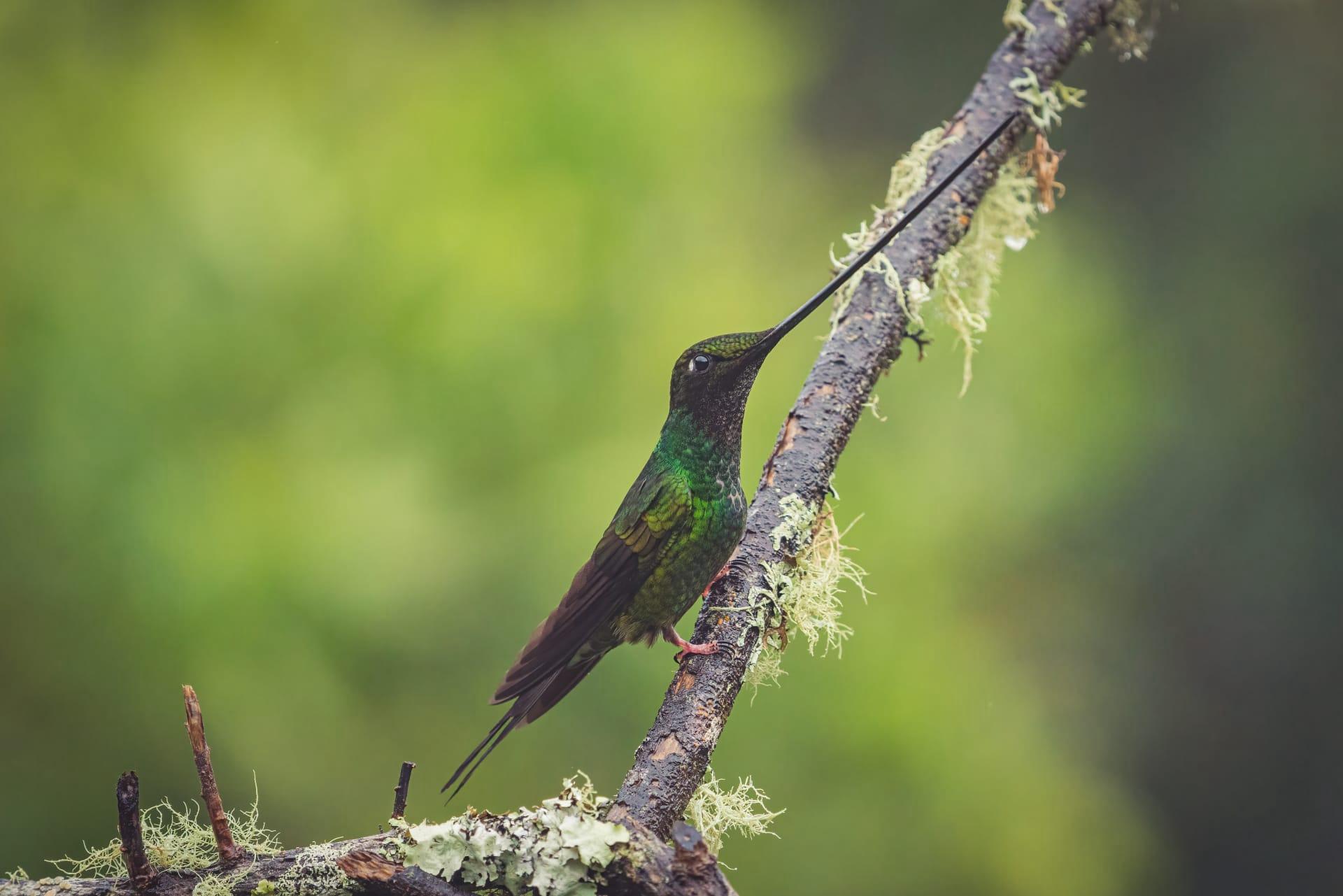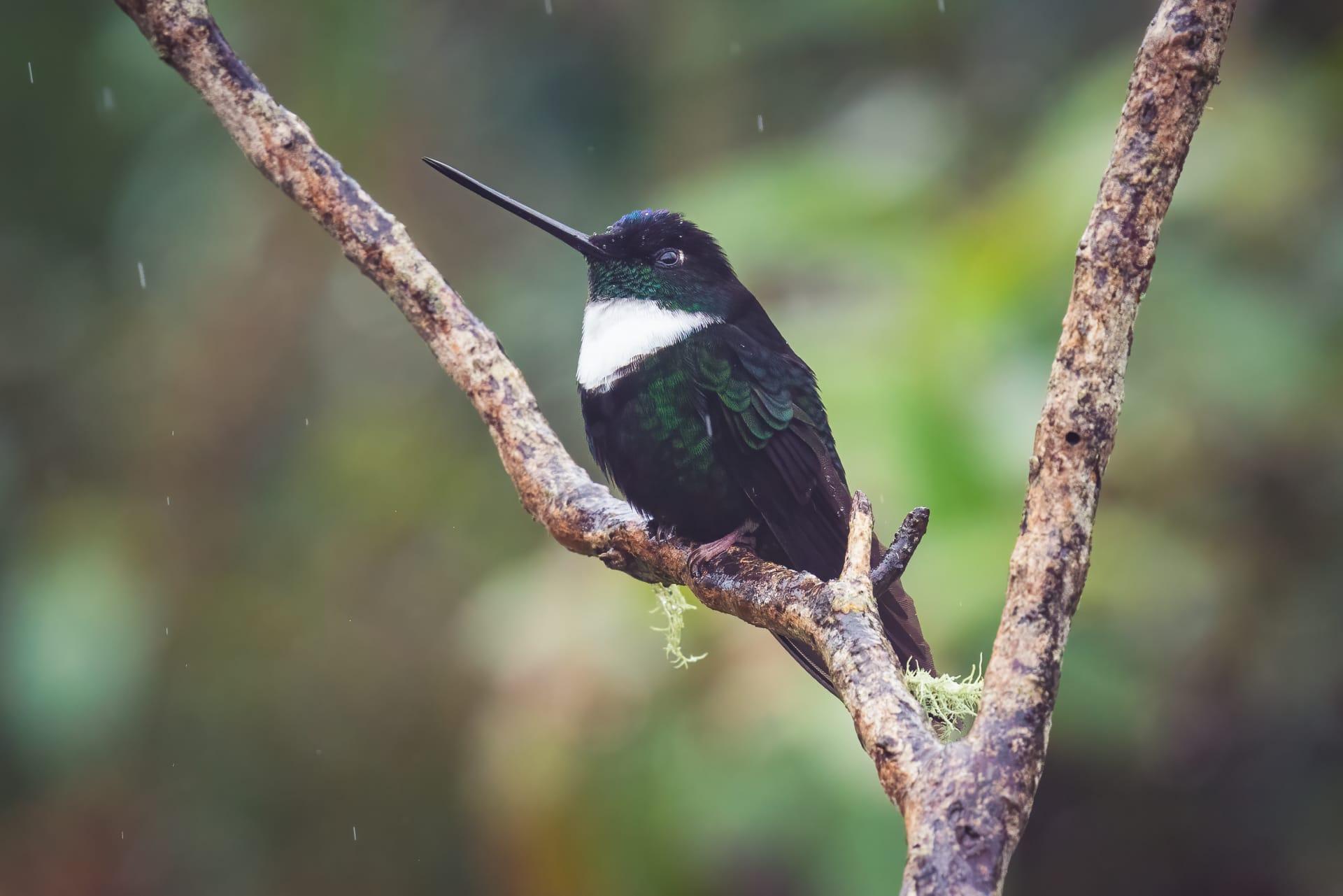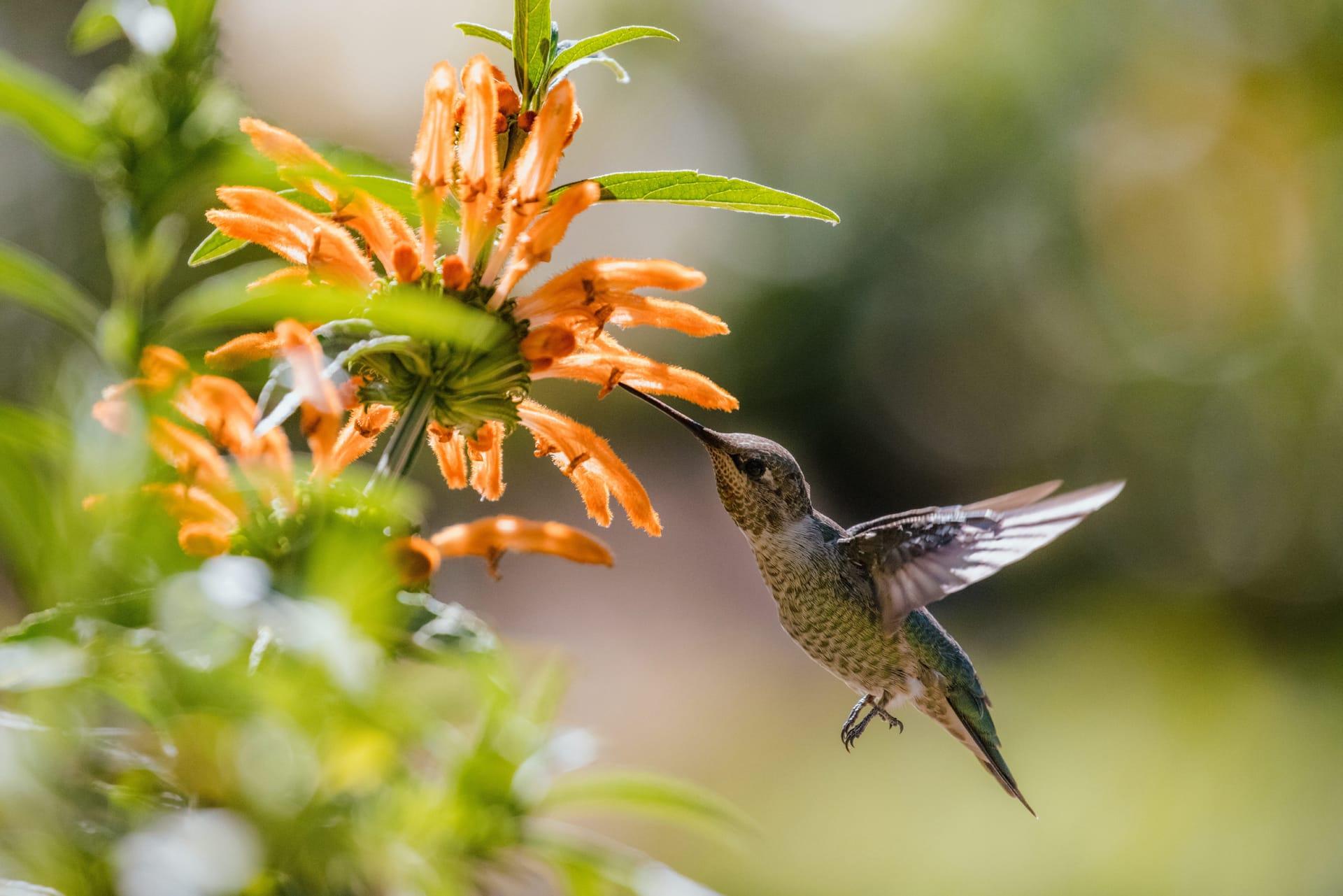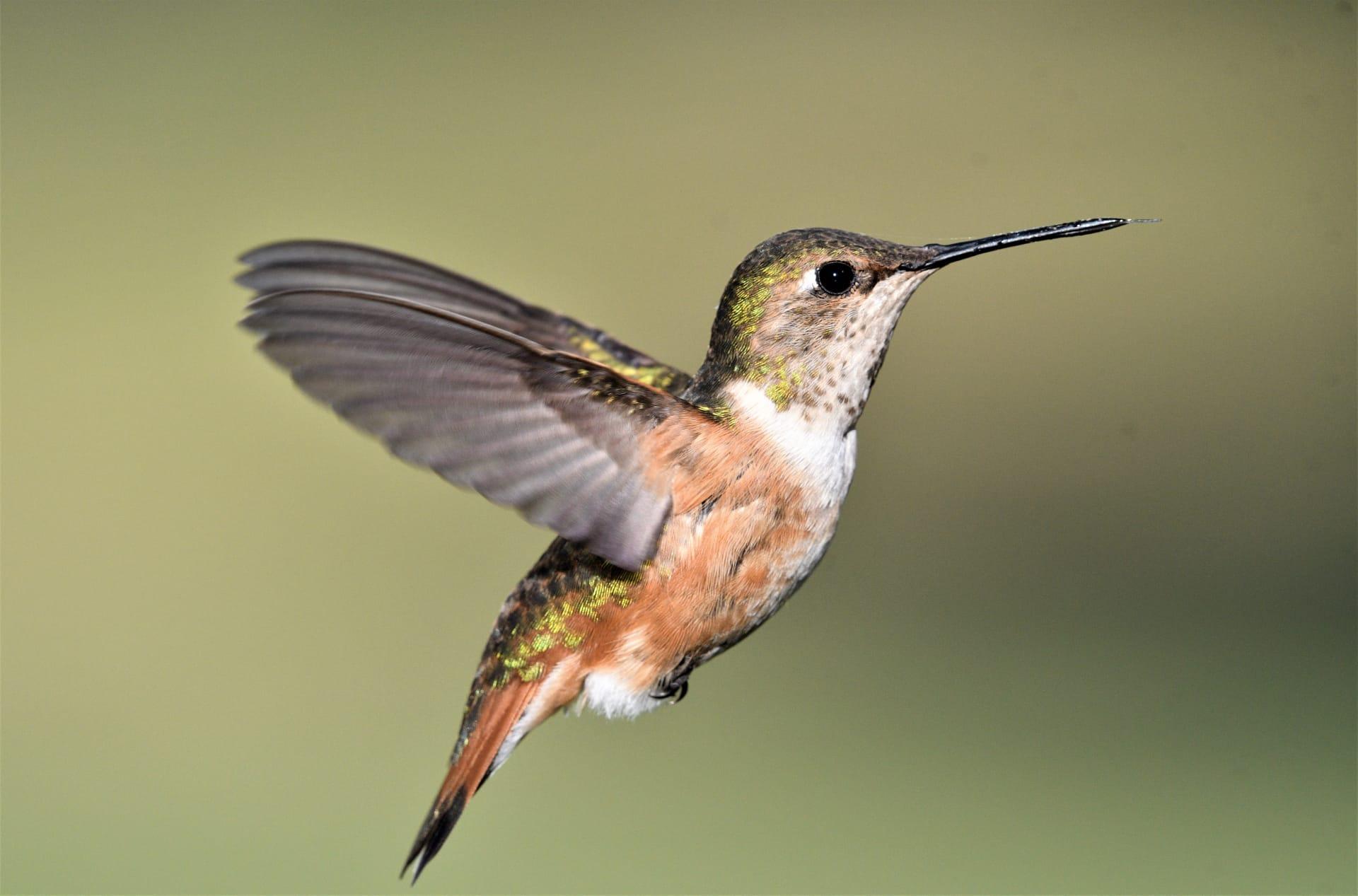Hummingbird
- Home /
- Mini Encyclopedia /
- Animal /
- Hummingbird
1
Hummingbirds, belonging to the family Trochilidae, are a fascinating group of birds known for their vibrant colors and rapid wing movement. There are over 300 recognized species of hummingbirds, categorized into 115 genera. These species vary significantly in size, color, and beak shape, adapted to their specific feeding and living habits. The Bee Hummingbird, the smallest bird in the world, measures a mere 2 inches in length, while the Giant Hummingbird can grow up to 8 inches. Each species possesses unique characteristics, such as the Sword-billed Hummingbird with its exceptionally long beak or the Magnificent Hummingbird with its iridescent plumage.
Hummingbirds predominantly inhabit the Americas, with their range extending from Alaska to Tierra del Fuego at the southern tip of South America. The highest diversity of hummingbirds is found in tropical regions, particularly in Ecuador, Colombia, and Peru, which collectively host more than half of all known species. While some species are widespread, many are endemic to specific regions, often confined to a single island or a distinct habitat type, like cloud forests or arid deserts. Notably, the majority of hummingbirds are non-migratory, but some species in North America undertake significant migrations, such as the Ruby-throated Hummingbird that travels up to 500 miles non-stop across the Gulf of Mexico.

2
Question: Do hummingbirds only drink nectar?
Answer: A common misconception about hummingbirds is that they solely consume nectar. In reality, while nectar constitutes a major part of their diet, providing the necessary energy for their high metabolism, hummingbirds also feed on small insects and spiders. These protein-rich foods are crucial for their diet, especially during breeding season for the growth of their young. The proportion of insects in their diet can be as high as 80% during certain times. Additionally, hummingbirds consume tree sap on occasions, particularly when flower nectar is scarce.

3
Hummingbirds have developed remarkable survival strategies to thrive in diverse environments. One notable adaptation is their incredible flight ability. They are the only birds capable of hovering in place, flying backwards, and even upside-down momentarily. This agility is crucial for accessing nectar deep within flowers. Their rapid wing flapping, which can reach up to 80 beats per second, not only supports their unique flying techniques but also helps in maintaining body temperature, as they have a high surface area to volume ratio.
Another key survival strategy is torpor, a hibernation-like state that hummingbirds enter during cold nights or food scarcity. During torpor, their metabolic rate drops significantly, and their body temperature can decrease to nearly half of its normal level. This state allows them to conserve energy, making it possible to survive in conditions where food is limited or during long migrations.

4
In ecosystems, hummingbirds play a pivotal role as pollinators. While feeding on nectar, they transfer pollen from one flower to another, aiding in plant reproduction. This pollination is vital for the survival of many plant species, especially those with flowers specifically adapted for pollination by hummingbirds, characterized by bright colors and tubular shapes.
Beyond pollination, hummingbirds also contribute to pest control through their consumption of insects. This predation helps maintain a balanced ecosystem by controlling insect populations. Furthermore, their presence indicates a healthy environment, as hummingbirds are sensitive to habitat changes and pollution. Thus, they are often considered bioindicators, signaling the overall health of the ecosystem they inhabit.

5
Film: "Hummingbirds: Magic in the Air" is an American documentary released by PBS in 2010. It provides an in-depth exploration of the life of hummingbirds, showcasing their remarkable flight abilities, unique mating rituals, and fierce territorial battles. Utilizing high-speed cameras, the film captures stunning slow-motion footage of these birds in flight, offering insights into their dynamic and colorful world.
Book: "The Hummingbird Handbook: Everything You Need to Know about These Fascinating Birds" by John Shewey, published in the United States in 2020, is an extensive guide to hummingbirds. This book offers insights into their behavior, migration patterns, and feeding habits. It also includes practical advice for attracting and observing these birds in your own backyard.
Book: "Hummingbirds: A Life-Size Guide to Every Species" by Michael Fogden, Marianne Taylor, and Sheri Williamson, published in the United States in 2014, presents a comprehensive overview of all known species of hummingbirds. The book includes detailed descriptions, life-size photographs, and information on the distribution and conservation status of each species, making it an invaluable resource for bird enthusiasts and professionals alike.